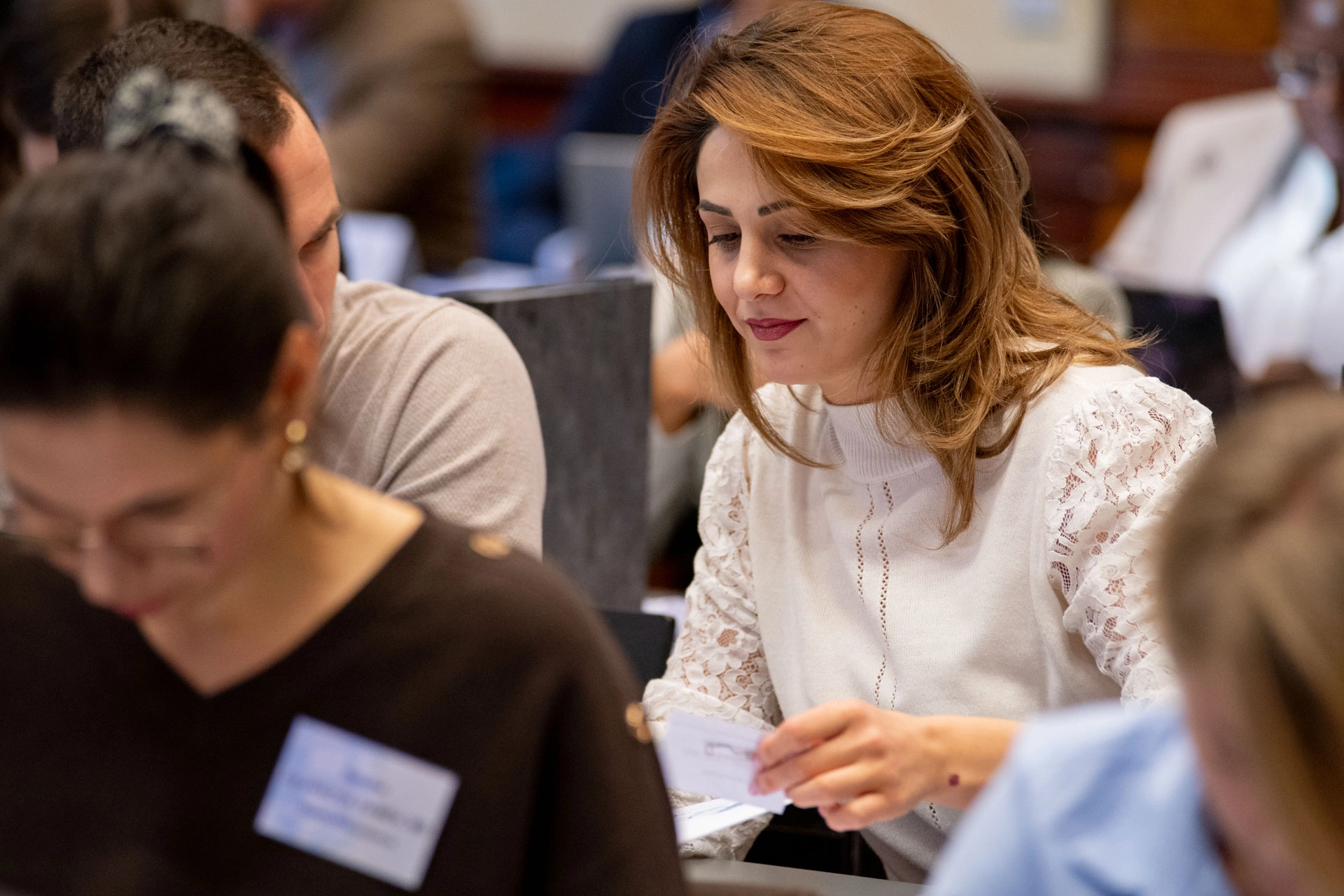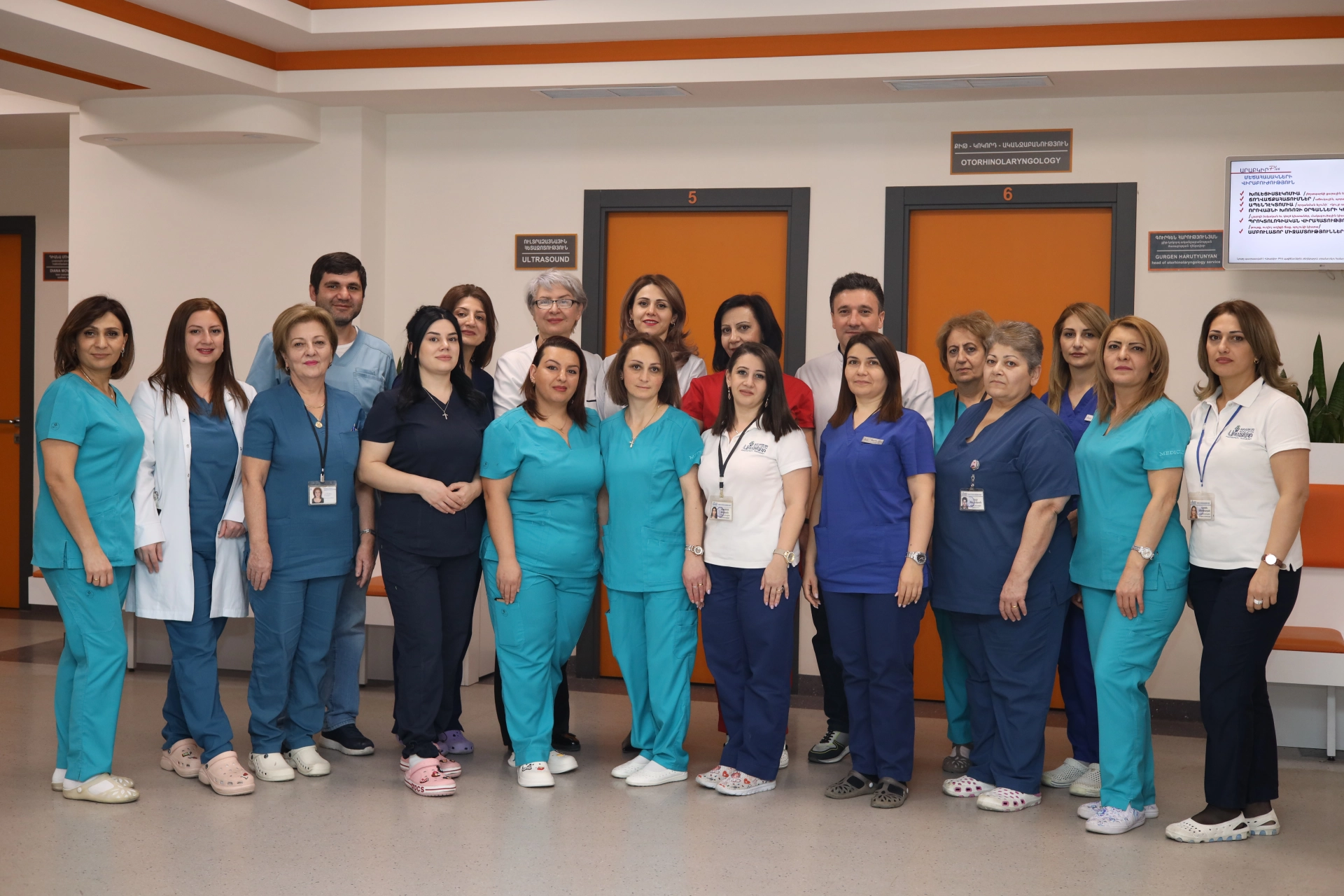News.am recently interviewed Professor Ara Babloyan regarding the newly established "Union of Medical Institutions of Armenia" Public Organization.
• Yesterday, information was published about the establishment of the "Union of Medical Institutions of Armenia" Public Organization. On June 19, the organization held its inaugural meeting, chaired by Professor Ara Babloyan. NEWS.am Medicine aimed to learn more about this new organization, including its origins, the motivation behind its creation, and its objectives.
Professor Babloyan, how did the idea of creating the "Union of Medical Institutions of Armenia" Public Organization come about?
In my view, the Armenian healthcare system has long needed such an organization. However, the idea first emerged during an extended consultation convened by Minister of Health Anahit Avanesyan. The meeting was held to present and discuss the comprehensive health insurance program. The minister sought the opinions of those directly involved in providing medical care and services.
During the meeting, while the general response from medical institution heads was positive, various questions and perspectives were raised, leading to a productive and meaningful discussion. It was during this exchange that the concept of forming an organization of medical institutions, drawing on international experience, was proposed. The goal was to create an entity that would actively collaborate with the Ministry to ensure the smooth implementation of this crucial project for our country.
What will be the status of the organization?
Initially, a group of initiators was formed to work on defining the organization's purpose, status, management principles, and statutes. The “Union of Medical Institutions of Armenia” Public Organization was registered following the established procedures. Its primary goal is to “support the development of medical institutions and enhance their operational efficiency to contribute to the advancement of the healthcare system in Armenia and the improvement of public health.”
On June 19, the organization held its inaugural extended session, during which several decisions were made to ensure the efficient operation and collaborative management of the organization.
The information indicated that the organization would have a large, expanded board and a five-member presidency. How was this determined, and on what basis?
First, it’s important to consider that Armenia has approximately 600 medical facilities, with about 21% providing inpatient services and 79% offering outpatient care. Additionally, 164 of these facilities are privately operated. All 600 organizations are eligible to become members of the union.
The organization’s secretariat is currently being established, and once complete, all medical institutions will be invited to join the organization.
The highest governing body of the organization is the General Meeting of its members. To ensure collegial management and representation of medical institutions of varying levels and statuses, the Council was approved with 37 members. From this Council, a five-member Presidency was formed. Each member of the Presidency will serve a one-year term in rotation.
Professor Babloyan, you chaired the first session, but you are not included in the published composition of the presidency. Are you a member of the Council?
I have chosen to serve as an advisor to the organization rather than as a member or president. I find it more meaningful to support and consult with my younger colleagues than to hold a formal leadership position.
Our organizational structure reflects a commitment to the collective good over personal interests. It demonstrates our ability to prioritize the health of the public and work together towards advancing our healthcare system.
What are the organization's current priorities?
Our primary focus is on health insurance, the licensing of specialists, and addressing the list of professions and associated educational reforms.
The challenges are numerous and varied, so we must collaborate closely with the Ministry of Health and various professional associations and healthcare organizations. I am confident that, with joint efforts, we will succeed.
About health

Union of Medical Institutions of Armenia26 June 24
Last news

Նոյեմբերի 14-ը շաքարախտի դեմ պայքարի համաշխարհային օրն է
14 November
Ի պատիվ կանադացի գիտնականի` 2007 թվականից նրա ծննդյան օրը հռչակվեց որպես շաքարախտի դեմ պայքարի համաշխարհային օր: Գիտնականը, առաջին անգամ ինսուլին ներարկելով, փրկել էր 14-ամյա տղայի կյանքը։ Շաքարախտի վերաբերյալ մարդկանց հուզող հարցերը շատ են: Տարածված մտահոգություններին անդրադարձել է «Արաբկիր» բժշկական համալիրի էնդոկրինոլոգիական ծառայության ղեկավար Իրինա Մարությանը:Մրգերի շաքարը նույնքան վնասակա՞ր է, որքան սպիտակ շաքարը:Ո՜չ, սպիտակ շաքարը ավելի վնասակար է, քանի որ մրգի շաքարը հիմնականում ֆրուկտոզա է: Եթե չափով օգտագործենք ճիշտ ժամերին` ըստ ինսուլինի ազդեցության, վնասակարությունը էականորեն կնվազի:Ճի՞շտ է, որ շաքարախտը միայն ավել քաշ ունեցող մարդկանց մոտ է ախտորոշվում:Ո՜չ։ Մենք տարբերում ենք դիաբետի երկու տիպեր` առաջին և երկրորդ։ Առաջինը հանդիպում է երեխաների մոտ։ Դա աուտոիմուն խնդիր է։ Ինչ խոսք, ցանկալի է, որ ավել քաշ չունենան, բայց այս պարագայում քաշը որևէ նպաստող գործոն չէ հիվանդության առաջացման համար։ Երկրորդ տիպի պարագայում հավելյալ քաշը մեծացնում է առաջացման հավանականության ռիսկը։Դիաբետը չի բուժվում, բայց կարո՞ղ է լիովին վերահսկվել:Այո՜, այն բուժելի չէ, բայց կարելի է լիովին վերահսկել:Արդյոք սթրեսը բարձրացնում է արյան շաքարը:Շաքարախտ ունեցող մարդկանց մոտ սթրեսը կարող է բարձրացնել արյան մեջ գլյուկոզայի մակարդակը և վատացնել շաքարախտի ընթացքը:Էնդոկրինոլոգ Իրինա Մարությանը հորդորում է հետևել մարմնի քաշին, ֆիզիկական ակտիվությանը և օգտագործել առողջ սնունդ: Վաղ ախտորոշումը նպաստում է հիվանդության վարման արդյունավետությանը: Շաքարային դիաբետը ոչ թե հիվանդություն, այլ ապրելակերպ է:

When Work Becomes a Calling
13 November
Sergey Babloyan, urologist-surgeon at the Arabkir Medical Center, was a guest on the “Lav Bjishk” (“Good Doctor”) podcast, where he spoke about his decision to become a doctor, his first surgery, the influence of his father, Professor Ara Babloyan, kidney transplantation, and the balance between life and work.

November 12 — World Pneumonia Day
12 November
To raise public awareness about pneumonia, Gevorg Boyajyan, Head of the Pulmonology and Pediatrics Department of the Arabkir Medical Center, answers common questions asked by parents.Does pneumonia occur only in winter?
No. Severe cases of pneumonia can also occur in summer — and in some cases, may even be more severe than those seen in winter.Do children with pneumonia always have a fever?
One of the main signs of pneumonia is a high fever lasting three days or more. In 97% of cases, an elevated temperature is present. The belief that a temperature of 37.2°C is “a pneumonia temperature” is incorrect.Is treatment less effective when managed at home?
According to international guidelines, many children can be safely and effectively treated for pneumonia at home, as long as they do not have any signs of severe illness.Does vaccination fully protect against pneumonia?
Pneumococcal vaccination significantly reduces the likelihood of developing pneumonia and also makes the disease milder if a child does become ill.Is pneumonia a contagious disease?
The contagiousness of pneumonia is very low.To reduce the risk of the disease, Dr. Boyajyan emphasizes the importance of a healthy lifestyle, timely vaccination, and dressing children appropriately to avoid overheating. He also highlights the role of proper nutrition and strongly advises against smoking in the presence of a child. Cigarette smoke damages a child’s airways, making them more susceptible to infections.

Marine Grigoryan Awarded Certificate of Professional Excellence by the Open Medical Institute
10 November
On October 19–25, 2025, an international seminar on pediatric radiology was held in Salzburg, Austria — an event that takes place once every four years. Marine Grigoryan, Head of the Diagnostic Imaging Service at Arabkir Medical Center, and radiologist Ani Sargsyan presented to the international medical community rare congenital pathologies encountered in their practice — cases so uncommon that they occur in only one person out of a million.
The professional team of Arabkir Medical Center shared their analyses and experience in diagnosing and managing such rare conditions. During the seminar, Marine Grigoryan was awarded a Certificate of Professional Excellence by the Open Medical Institute.
“This is the result of teamwork,” noted Marine Grigoryan. “The support and encouragement of the team play a major role in the professional growth and development of each individual. This success once again proves that we should never stop at what we’ve achieved — we must continue learning, improving, and seizing every opportunity to gain new knowledge in service of children’s health.”
The achievements recognized on international platforms demonstrate that pediatric medicine in Armenia continues to develop in line with global scientific standards.

International Day of Radiology
08 November
130 years ago, on this very day — November 8 — a German scientist discovered X-rays. In 2012, several international organizations declared November 8 as International Day of Radiology to honor this groundbreaking discovery.
This day is another opportunity to express our gratitude to all radiology specialists who, with their knowledge, responsibility, experience, and dedication, make accurate diagnoses and contribute to saving lives every single day.
We warmly congratulate all radiologists on their professional holiday and wish them continued scientific and professional success!

Work Continues on the Implementation of the Organ and Tissue Transplant Program from Deceased Donors
03 November
At the invitation of the Arabkir Medical Center, doctors from Great Britain are visiting Armenia: Professor Nizam Mamode, a transplant surgeon, and Benjamin Ivory, an anesthesiologist and intensive care specialist, who also heads the UK’s national organ transplant education system.
A meeting was held at the Arabkir Medical Center between leading British and Armenian specialists to discuss the procedures for diagnosing brain death, training models, and organizational aspects of the program.
On November 4, the British specialists will meet with Anahit Avanesyan, Minister of Health of the Republic of Armenia. Two working groups have been established under the Ministry of Health to focus on brain death diagnosis and the transplantation of organs and tissues from deceased donors. UK experts will collaborate with Armenian specialists to support the development and implementation of this new system.
As part of the visit, additional discussions on organ transplantation are scheduled for November 6 at the Arabkir Medical Center.

 English
English
 Հայերեն
Հայերեն Русский
Русский